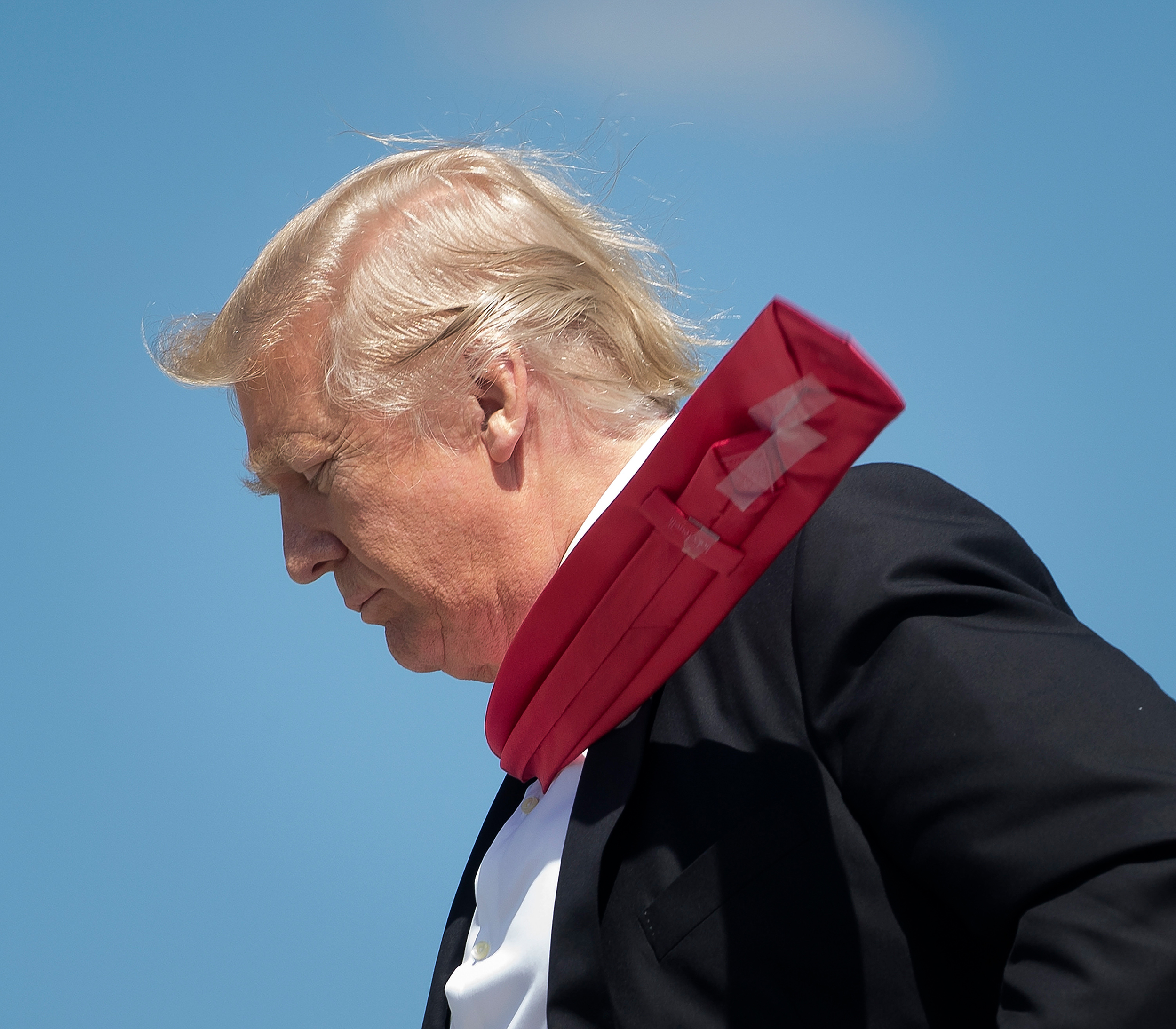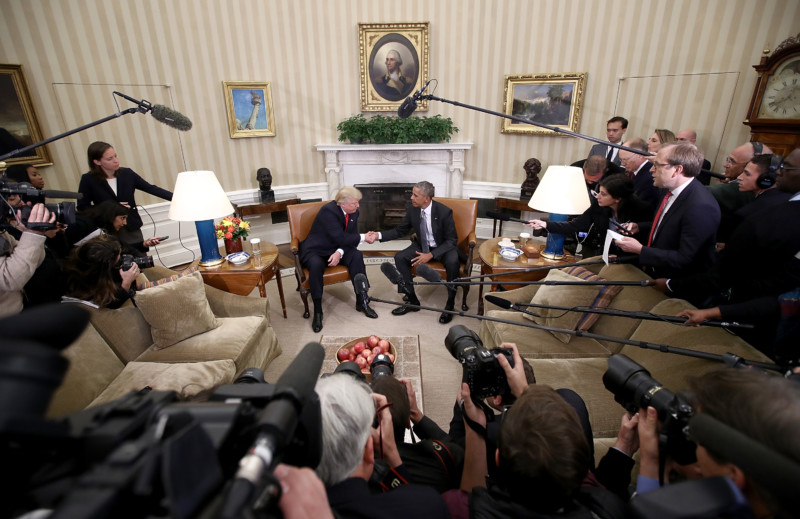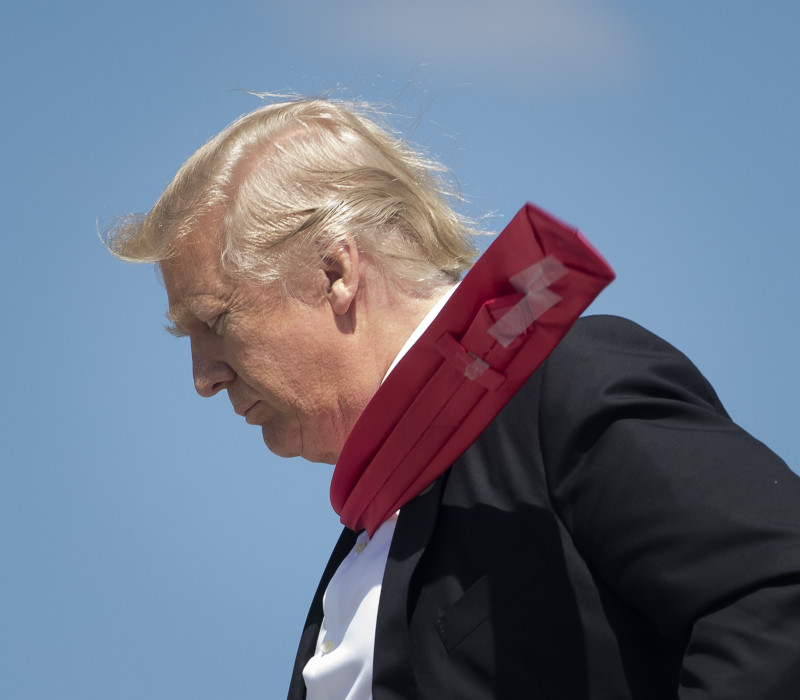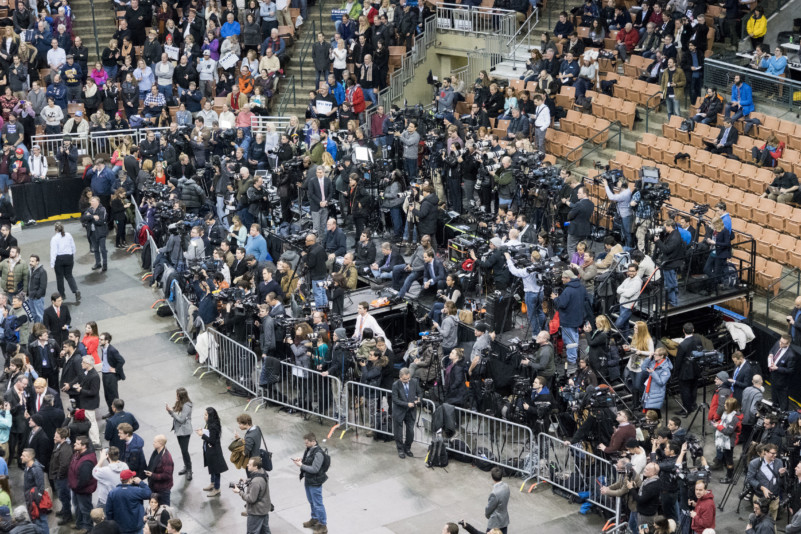They couldn’t believe their eyes. It was really happening. There Donald Trump was in the Oval Office, awkwardly shaking hands with his predecessor, a man he’d accused of being born outside the United States. On the back of that myth, the real-estate developer’s star had surged. They couldn’t have been more different, these two men, and that presented a conundrum for the reporters and photographers in the room. What were Americans trying to tell them? How should the press interpret those signals? Could it be possible that some of the people who had voted for the man on the right had also voted for the man on the left? (It was.) Was it also possible that loyalists on each side despised their opposites with a viciousness not seen since the Civil Rights era, and before that, the Civil War? (It was.) The press would soon learn that it was caught between them, interpreting them for one another and, on occasion, taking sides. A new era of political journalism had begun.
ICYMI: The union behind Chicago’s cops hung up on us when we asked about a controversial letter
Uneasy lies the head that wears a crown, but this emperor’s new clothes were held together with Scotch tape. The media’s dilemma in covering Trump lies in how and whether to point that out. Should they view him as a responsible occupant of the world’s most daunting office or a vain and self-important fool? The president seems to encourage the confusion. He rose as a representative of “real America,” yet his taste for artifice, even in the manner of securing his tie, is frequently on display. Is he motivated by concern for the common man, or by self-interest? Does anything matter to him beyond how he is perceived, primarily by the press, which, depending on the day and the week, he can both court and repel? Looking at his face, it’s hard to tell.
As always, they were there to watch. There was space on the floor and in the stands, but the press pen was packed. This was way back in New Hampshire, on the eve of the primary. As journalists squinted through viewfinders and scribbled in notebooks, candidate Trump stood on the stage and pointed over the heads of the voters who had come to hear him, at the press. It wasn’t the first time, and it would hardly be the last, but few watching that day would have predicted how central the gesture would become to his presidency. He was perpetually wronged, witch-hunted like no one before him, and the press was to blame. They were “FAKE NEWS,” the “enemy of the American people,” “really, really dishonest people,” “bad people,” “sick people.” “I really think they don’t like our country,” he said. People listened, and the press watched and clicked and wrote it all down.
ICYMI: The story behind “one of the best reported pieces of the year”






